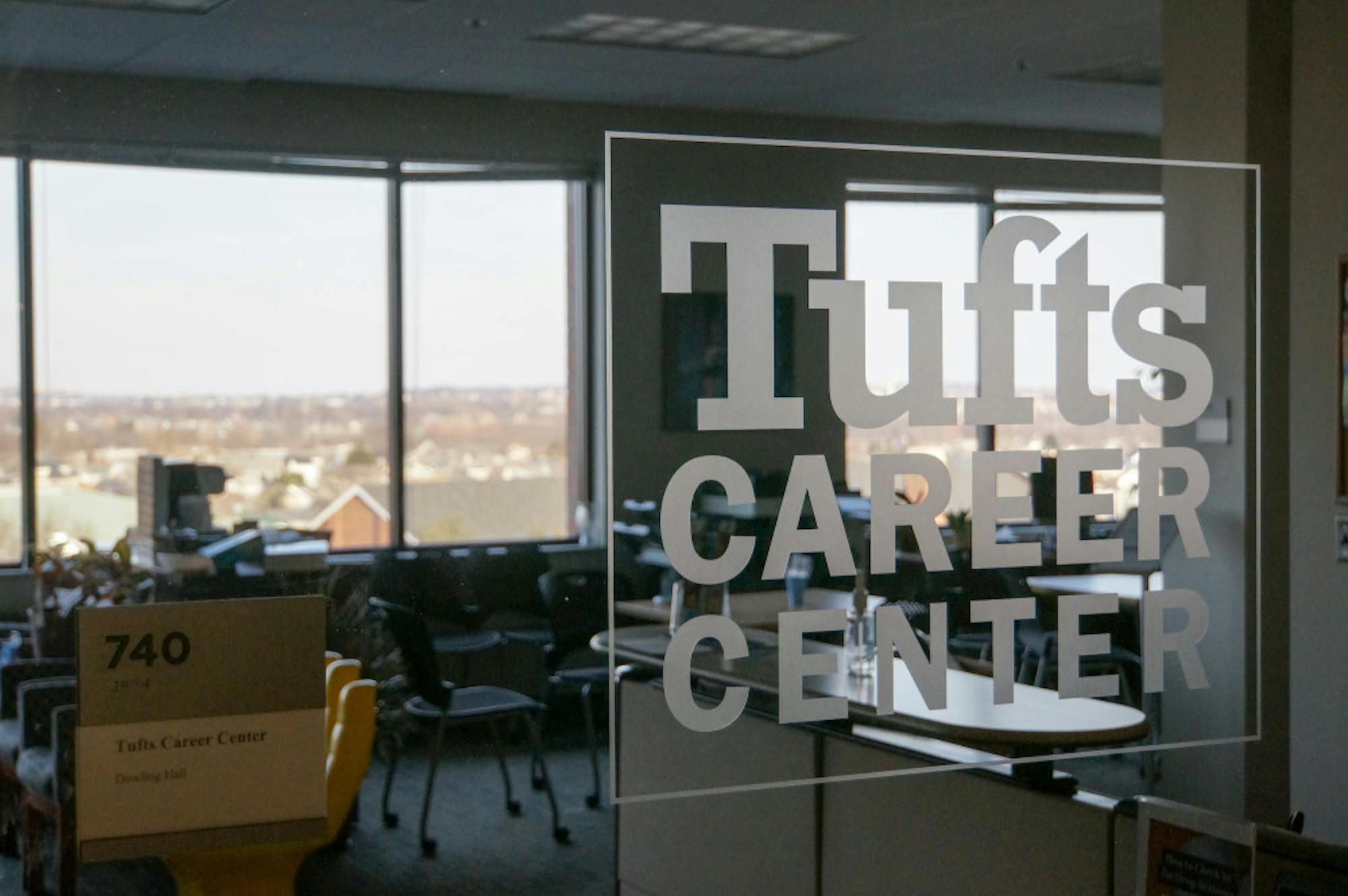The Career Center has worked to adopt new strategies of maintaining employer-student engagement, after its career fairs transitioned to an online format. Though the fairs have had to satisfy new standards surrounding a virtual platform, the Center has continued to see high rates of attendance.
While career fairs normally involve hundreds of employer stands spread across the Gantcher Center, this semester's virtual events utilized Handshake’s Virtual Fair tool, which was launched this summer in response to the COVID-19 pandemic.
In order to participate in the fair, students needed to register for the event and sign up for 10-minute time slots with employers.Students could choose between one-on-one or group employer sessions and could only attend sessions they signed up for, according to Robin Kahan, associate director of engineering career services.
Sue Atkins, the associate director of employer relations, explained thatTufts usually holds large career fairs in the fall and spring, which host 200 and 160 employers, respectively.
Atkins added that the number of employers at each virtual fair is significantly lower to accommodate the new format. In an effort to provide a similar number of employers to its in-person activities, the Career Center has planned to host more events than usual.
"With this new virtual format, the recommended number of employers per fair is 50, which is why we’re hosting four smaller fairs each semester to bring us close to our pre-COVID targets,” Atkins wrote in an email to the Daily.
Misha D’Andrea, a recruiting coordinator at the Career Center, said it was critical to ensure students knew how to navigate the online fair.
To prepare students, the Center hosted two live workshops that were then uploaded to its YouTube channel for later viewing, according to D’Andrea.She explained that the Center provided articles via the weekly Career eNews newsletter, and several days of Virtual Fair Chat office hours.
A total of 500 students attended the Engineering and Technology Fairs, which resulted in 2,218 individual and group sessions across two days, according to D'Andrea. The General Career Fair attracted 320 students, and the number of employer-student interactions amounted to 1,596.
Students appreciated the ability to create schedules for themselves, so they could connect with employers at specific dates and times, according to Kahan.
“Students said that the 10-minute allotted time was more personal (i.e., no one standing in line behind you) and also a longer amount of time than typically possible at a traditional fair,” Kahanwrote in an email to the Daily. "Students who preferred not to speak one-on-one with company representatives appreciated the group sessions and the ability to learn about organizations alongside their peers."
For employers alike, the new format allowed them to speak in depth about their organizations by utilizing various virtual tools, according to Jonathan Sanford, assistant director of employer relations.
"One key advantage of the virtual career fairs is that companies can talk to a larger group of students and tailor their pitches for the Tufts audience with more in-depth complementary content, e.g., presentation slides and web demos," Sanford wrote in an email to the Daily.
Although there are no more career fairs this month, the Career Center’sInterim Executive Director Donna Espositosaid the Center offers many additional ways students can discover, contact or interview with future employers.
"Part of what our career advisors do on a regular basis is help students understand the hiring timelines for the organizations and positions that interest them," Esposito wrote in an email to the Daily. "Some career fields, like engineering, tech, finance, and consulting, recruit earlier in the fall, while others, like education, nonprofits, communications & media, might not be looking until later in the winter or spring.
This year, the Career Center also plans to hold industry-specific fairs targeted towards the following interests: Creative Careers, Communications and Media, Engineering and Tech, Health and Life Sciences and Social Impact and Civic Engagement.






